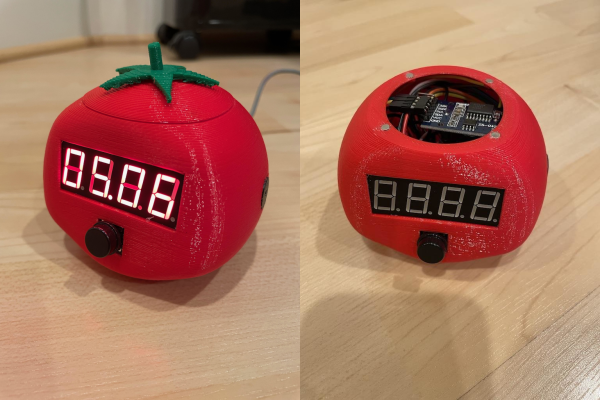It’s really never too early (or too late) to learn time management. All joking aside, carefully managing one’s time can result in some really wondrous achievements. So it’s best to learn early, when most of your time is spent generally having fun.
Let’s say you’ve just heard you have five minutes left to play, but what does that mean if you’re three years old? Not much, unless you have some visual cues to go by. That’s the idea behind [Julius Curt]’s visual timer for toddlers.
This lovely reverse progress bar uses a Wemos D1 mini to control a strip of six WS2812B LEDs at 30 LEDs/meter density. There’s a small OLED display for literate users, and the whole thing is childproof. [Julius] challenged himself to do this entire project in one day, and ended up finishing it in a little over eight hours total, including time to design the way cool knob. Be sure to check out the build video below.
If you struggle with managing your time, check out our own [Arya Voronova]’s personal account.
Continue reading “Time Management For Toddlers”







 Would you believe that some people think the internet is a time waster? Well, not at this particular address of course, but we can think of some other sites that are absolute rabbit holes without so much as a rousing game of croquet at the bottom. If you need help achieving what Tim Ferriss dubbed a Low Information Diet, there are browser extensions that will block your access to sites that keep you from getting things done. [Ivan’s girlfriend] has taken this time management tack seriously and even created a simple web page that states “Don’t Waste Your Time!” that will show if she tries to get to Facebook.
Would you believe that some people think the internet is a time waster? Well, not at this particular address of course, but we can think of some other sites that are absolute rabbit holes without so much as a rousing game of croquet at the bottom. If you need help achieving what Tim Ferriss dubbed a Low Information Diet, there are browser extensions that will block your access to sites that keep you from getting things done. [Ivan’s girlfriend] has taken this time management tack seriously and even created a simple web page that states “Don’t Waste Your Time!” that will show if she tries to get to Facebook. Do you want to use your time more productively but are tomato-averse? [Robin]’s
Do you want to use your time more productively but are tomato-averse? [Robin]’s 








